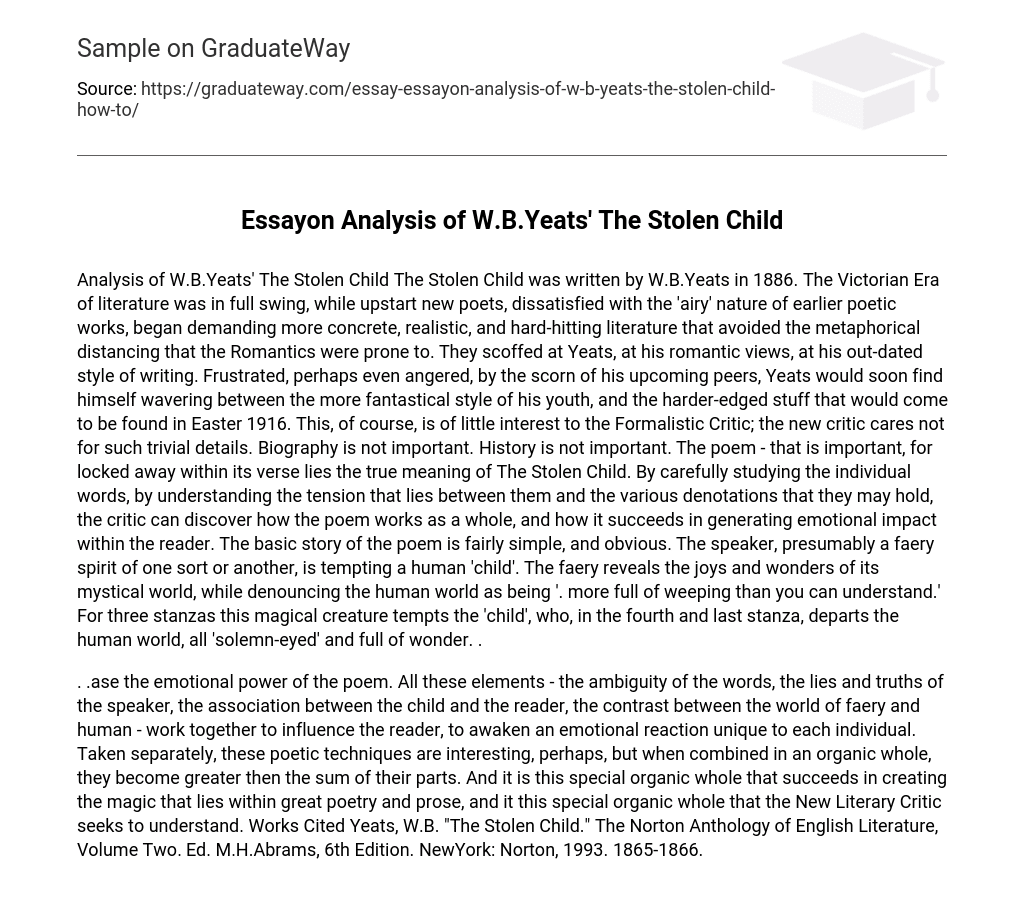Written by W.B. Yeats in 1886 during the Victorian Era, The Stolen Child embodies the shift in literary preferences. As the new generation of poets emerged and voiced their dissatisfaction with the abstract and figurative nature of earlier works, they yearned for literature that was more grounded, realistic, and impactful. Consequently, these poets ridiculed Yeats and his romantic ideals, viewing his writing style as outdated.
Yeats, feeling frustrated and possibly angered by the ridicule from his future peers, began to vacillate between the imaginative style of his earlier years and the more aggressive approach that would later be seen in Easter 1916. However, these tendencies hold no relevance for the Formalistic Critic, as they dismiss such insignificant particulars. Personal background and historical context carry no significance for them.
Within the verse of the poem, lies the true meaning of The Stolen Child, and it is important to analyze and comprehend the words and the tensions they hold to understand how the poem as a whole generates emotional impact in the reader. Despite the simplicity and obviousness of the basic story of the poem.
In the poem, a faery spirit is enticing a human child. The faery exposes the enchantments and marvels of its mystical realm, while condemning the human world as one that is filled with more sorrow than the child can comprehend. Throughout three stanzas, this fantastical creature entices the child, who ultimately leaves the human world in the fourth and final stanza. The child departs with a solemn gaze, brimming with awe at the profound emotional impact conveyed in the poem.
Collectively, these elements such as the words’ ambiguity, the speaker’s blend of lies and truths, the connection between the child and reader, and the juxtaposition of faery and human worlds collaborate to influence and evoke distinct emotional responses in individual readers. While these poetic techniques may be intriguing on their own, when fused together organically, they surpass their individual impact. It is this unique blend that enables great poetry and prose to possess a magical essence, which the New Literary Critic aims to comprehend.
Works Cited
- Yeats, W.B. “The Stolen Child.” The Norton Anthology of English Literature, Volume Two. Ed. M.H.Abrams, 6th Edition. NewYork: Norton, 1993. 1865-1866.





